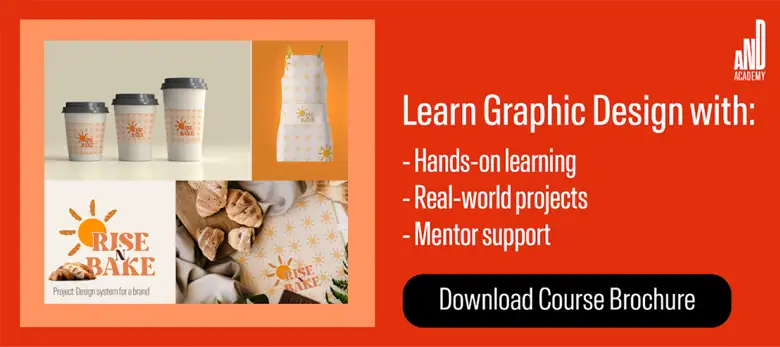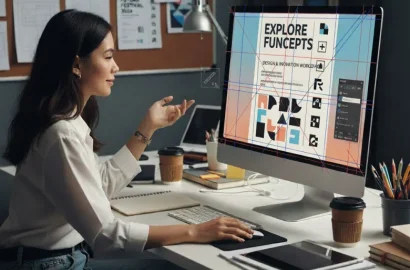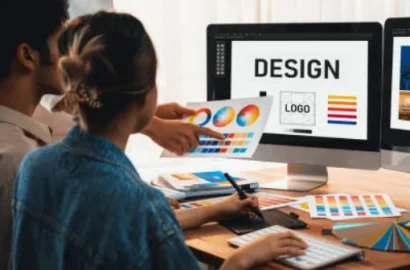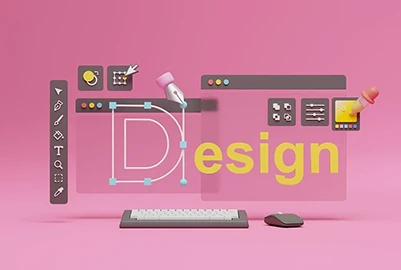Come along as we find out if earning a graphic designer certification is a valuable step for your future.
In today’s digital world, visuals dominate everything. Be it scrolling through social media or walking past eye-catching billboards, design is everywhere. If you’re contemplating a career in graphic design or already are in the field, you might think to yourself if getting certified is worth the investment. Read below to understand how a graphic design certification can help you upskill and add value to you as a designer.
Introduction to Graphic Design Certifications
Getting a certificate for a skill is a valuable achievement. It means that you, besides commanding intelligence, have put in the effort and hard work and proven that you are truly skilled and competent. It shows you have put in the hours and spent cognitive resources to practice, learn, and master a certain skill.
In this regard, a certificate no longer remains a piece of paper, it validates your expertise and can open doors to opportunities you might not have access to otherwise.

The Growing Demand for Graphic Designers
Graphic design is no longer limited to traditional media. As digital platforms grow, so does the need for skilled designers who can create compelling visuals across multiple formats. Let’s understand why this makes a certification even more important.
1. Industry Trends Shaping the Field
The design industry has undergone a shift. As recently as 5 years ago, it was centered around print and advertising. However, now it encounters fields like augmented reality (AR), virtual reality (VR), software, and interactive media. Brands demand visuals to stand out in crowded digital spaces. Whether it’s creating immersive gaming experiences or designing intuitive mobile apps, graphic designers are needed as much as engineers.
Take the rise of motion graphics, for instance, which almost every major website uses. Designers who can animate concepts are now in demand for industries like e-learning, digital advertising, and web development.
2. How Certifications Fit Into the Picture
As the industry evolves, so do the expectations for designers. Certifications show employers and clients that you’re not just keeping up but staying ahead. They highlight technical proficiency, and commitment to growth, making you a more attractive candidate in competitive markets.
Key Benefits of Earning a Graphic Designer Certification
Getting certified isn’t just about adding a line to your resume. It’s a learning experience that has the potential to benefit your career in multiple ways. Here are a few advantages you have as a certified graphic designer.
1. Enhanced Skills and Creativity
Enrolling in a certification program can help you unlock new skills. You can master the latest tools, techniques, and creative roadmaps to use in your workflow, saving you time and effort. Imagine upgrading from basic Photoshop edits to creating complex vector art in Adobe Illustrator or creating web layouts in Figma.
Instead of relying on trial-and-error approaches to learn these tools, structured lessons, and hands-on projects can help understand the “why” behind every function. Consider a certified graphic designer working on branding for a startup—having mastered vector graphics, they can create scalable logos and polished designs.

2. Better Job Opportunities
Employers value certifications from reputed institutions, often making them an eligibility criteria for certain roles. Since these institutions are trusted by employers, getting certified by them increases your chances of securing the role.
Additionally, for employers, certifications logically justify taking your competence for granted, in other words, trusting your abilities without the need for further validation. Picture a hiring manager evaluating two candidates: one with a self-proclaimed understanding of design tools and another with a certification that verifies their skills. The latter stands out as the safer choice for the hirer, particularly in competitive industries like advertising or tech, where expertise is non-negotiable.
3. Networking and Industry Recognition
Certification training programs often activate a network of peers, mentors, and industry experts. Attending workshops, participating in forums, or joining alumni groups helps you connect with like-minded professionals in the industry. These connections can lead to collaborations, referrals, or even job offers.
Popular Graphic Design Certification Programs
Not all certifications are created equal. Here are some of the most sought-after programs that cater to different aspects of graphic design:
1. Adobe Certified Professional
Adobe is the industry standard in graphic design software. Every designer knows the importance of software like Photoshop, Illustrator, or InDesign. Mastering these tools can significantly enhance your capabilities. The Adobe Certified Professional program demonstrates mastery of Adobe Creative Cloud software and foundational knowledge of digital media.
Each certification is tied to one Creative Cloud application, like the ones mentioned above, and often commences with an exam. Each 50-minute exam includes a Questions section followed by a Tasks section with live-in-the-app activities inside Adobe software.
2. Graphic Design Specialization by CalArts
This four-course sequence, offered in Coursera, exposes students to the fundamental skills required to make sophisticated graphic design– covering process, historical context, communication through image-making, and typography. This is a beginner-level course and does not require any prior experience. Led by Anther Kiley, students in this 80-hour course, will learn art history, branding, and visual communication among other fundamental aspects of graphic design.
Since this is a beginner-level certification, it might not increase your graphic designer salary, but it can help you get your first job or a freelance gig. With enough practice, you can master the art of image-making and typography, and move on to the next level.
3. Google UX Design Professional Certificate
Offered on Coursera by Google, this one is for beginners who want to learn UX design from scratch. This is a 6-month course that starts with the basics of developing personas, user stories, and user journey maps and moves on to conducting usability studies, creating wireframes and prototypes, as well as testing and iterating on designs.
A special quality about this certification is that it is offered by Google, which means that it is user-centric. There are going to be elements of consumer psychology and behavior based on which you will learn how to design a user experience.

The Certification Journey: What to Expect
Before enrolling in a certification program, it’s essential to know what lies ahead. Read on to know what you should consider before starting one.
1. Course Duration and Costs
Certification programs vary in length and cost. Most courses on Coursera are short and affordable, while others, like Adobe and Figma, require a more significant investment of time and money. For instance, Adobe requires you to have 150 hours of exposure to lessons and hands-on experience. Regardless, the returns—be it in skills, job opportunities, or earnings—are worth the effort. It is, however, critical to only sign up for a course that matches the time and financial investment you’re willing to make.
2. Balancing Work and Study
Many certification programs are designed for college students or working professionals. Flexible schedules, online classes, and self-paced modules make it easier to balance commitments. Look for the one that best suits your schedule.
3. A Transformational Learning Process
Arguably the most important aspect of any learning process is practical experience. Besides the promise of a certificate, the program is supposed to take you through a transformative learning process and impart new knowledge, and exposure to new ideas and truths. Finding programs that facilitate such a transaction can exponentially help you grow.
Addressing Common Myths About Certifications
There are phrases that commonly get thrown around in discussions involving certification courses, or online graphic design courses in general. Upon ample social listening, one is bound to catch one of these phrases or misconceptions about certification. We’re here to clear up a few for you.
1. “You Don’t Need One to Succeed”
True, some designers achieve success without formal credentials. But some do not equal all. This is a common utterance against certifications, the blame for which can go to ‘confirmation bias’ –the tendency to give weight to examples/facts that confirm preconceived beliefs, sometimes leading to limited data representing the whole. Having a certification can certainly increase your chances of success in the field. Hence, it’s best to go with what suits your requirements in this regard.
“Certifications are Expensive and Time-Consuming”
While certifications indeed require an investment, there are enough of them available to suit your needs. Many programs offer financial aid or installment plans. There are also platforms that host online graphic design courses with certificates free of cost. So, on this one, it’s best to keep searching till you find the one that’s affordable.

Tips to Maximize the Value of Your Certification
A certification is only as valuable as how you use it. Here’s how to make good use of the knowledge you gained from it:
1. Build a Portfolio
Use your newly acquired skills to create a graphic design portfolio that shows your understanding of the principles of art and design and how you work. Include before-and-after comparisons to demonstrate your growth. Add reviews and writeups about common design trends and their impact based on what you have learned. The goal is to show skills and personality through your work. Check out this project by AND Learner, Meenakshi S to get inspiration for your portfolio!
2. Stay Updated
Regularly update and upgrade the skills that you learned by attending webinars, reading industry blogs, or experimenting with new tools. Subscribe to industry blogs or podcasts to stay informed about emerging trends like motion graphics or user-centered design. Experiment with new software or updates to keep your skills sharp and relevant. Use your certification as a foundation for continuous learning.
The Future of Graphic Design Careers
With new developments in the tech industry, there are important concerns that need to be addressed.
1. The Role of AI and Automation
AI has become a controversial topic in art, design, and almost every other creative forum. Generative AI has attained villain status, threatening to run artists out of their jobs. Given the quality of renders that AI creates, there is no denying it helps businesses cut costs, hence the popular disdain. But, those who know how AI models work, know that its only edge is statistics and probability, and it is unable to understand context like humans do.
However, it is also not smart to reject AI. For repetitive tasks, AI is a game-changer, and therefore, to an extent, every designer should find ways to incorporate AI into their workflows, with a strict rule in place– Never use AI to outsource thinking.
2. The Human Touch in Design
Rolling off the previous paragraph; genuine creativity cannot be put in algorithms. It is our experience that makes us who we are and machines can only emulate that. Those narratives are expressed in mediums, design is one of those.
Without the human touch, designs are bound to feel disconnected, and out of context. Certification, nevertheless is an experience that equips us with knowledge and creativity which we can use to create impactful designs.

Final Thoughts
Earning a graphic design certification is more than a career move—it’s a quest for new knowledge for personal and professional growth. Remember that no certification can replace passion, persistence, and curiosity. They are tools to refine your talent, not define it. Use them as a foundation, but build upon them with continuous learning, practical experience, and creativity. Your unique perspective is what will make your work stand out, no matter how many certifications you have.
So, whether you’re just starting your design journey or looking to advance your career, earning a graphic design certification can be a rewarding decision.
6 Top FAQs About Graphic Design Certifications
1. What is the best graphic design certification?
It depends on your goals. Adobe Certified Professional is excellent for mastering software, while Google UX Design Certificate focuses on user experience.
2. Are graphic design certifications recognized globally?
Yes, certifications from platforms like Adobe and Google are respected worldwide.
3. Can I get certified while working full-time?
Absolutely! Most programs offer flexible online courses that are self-paced.
4. Do certifications guarantee a job?
They don’t guarantee a job but significantly improve your chances by validating your expertise.
5. What are some Graphic Designer Certification Requirements?
It depends on the level of the certification program. Usually, beginner-level programs have no requirements, while advanced-level programs might ask for a minimum proficiency in certain software.
6. How long does it take to earn a graphic design certification?
Duration varies. Some programs take weeks, while others may take months, depending on the depth and complexity.
Next Steps
To learn more about graphic design, visit our blog, or consider the following resources:
- Watch this session by design veteran and AND’s Academic Head, Prachi Mittal, and our Course Lead, Soumya Tiwari.
- Talk to a course advisor to discuss how you can transform your career with one of our courses.
- Pursue our Graphic Design courses – all courses are taught through live, interactive classes by industry experts, and some even offer a Job Guarantee.
- Take advantage of the scholarship and funding options that come with our courses to overcome any financial hurdle on the path of your career transformation.
Note: All information and/or data from external sources is believed to be accurate as of the date of publication.









